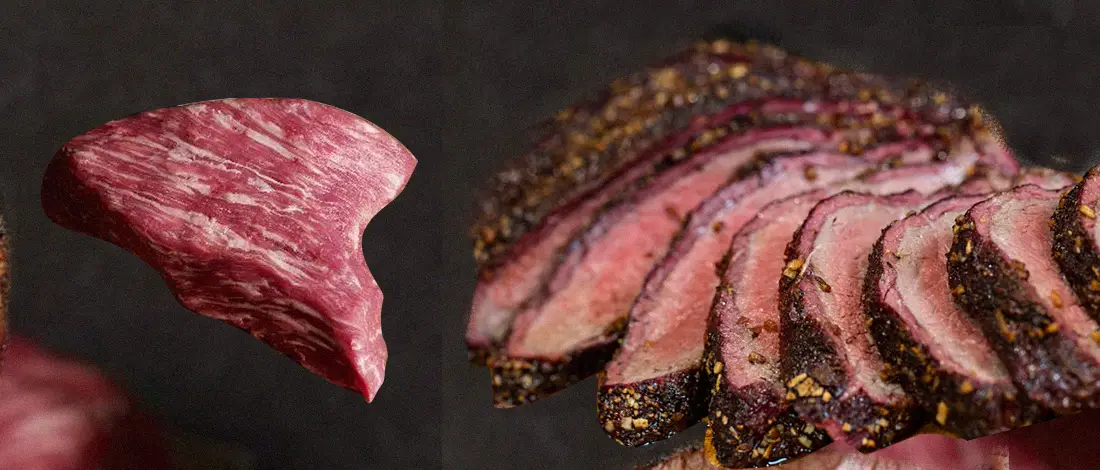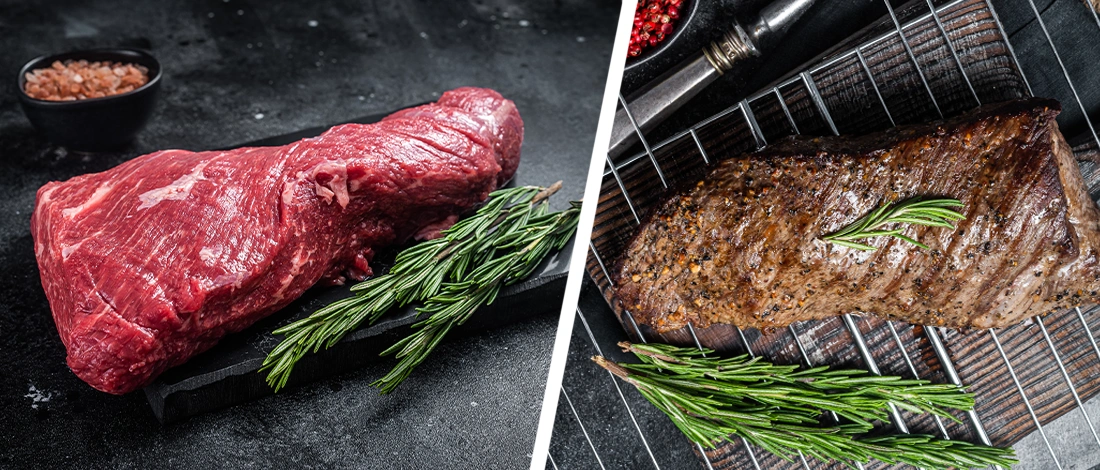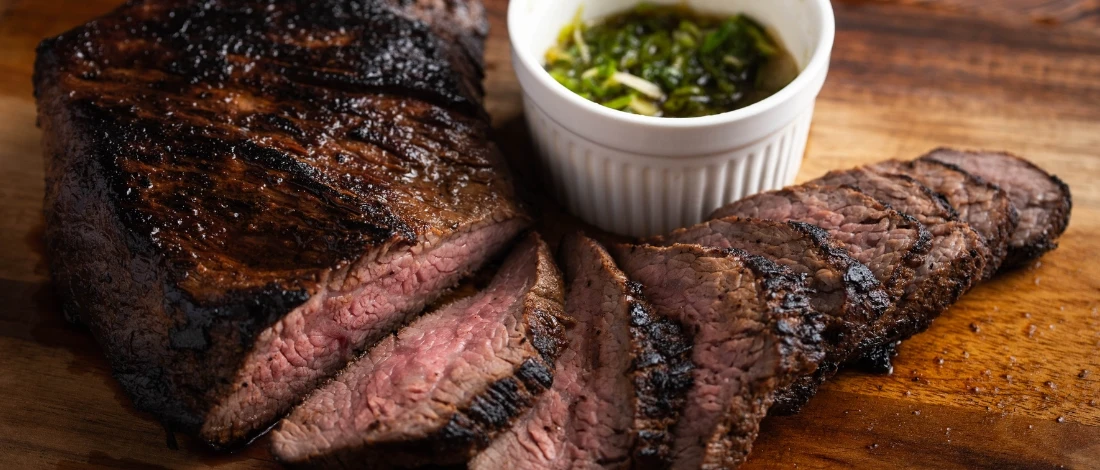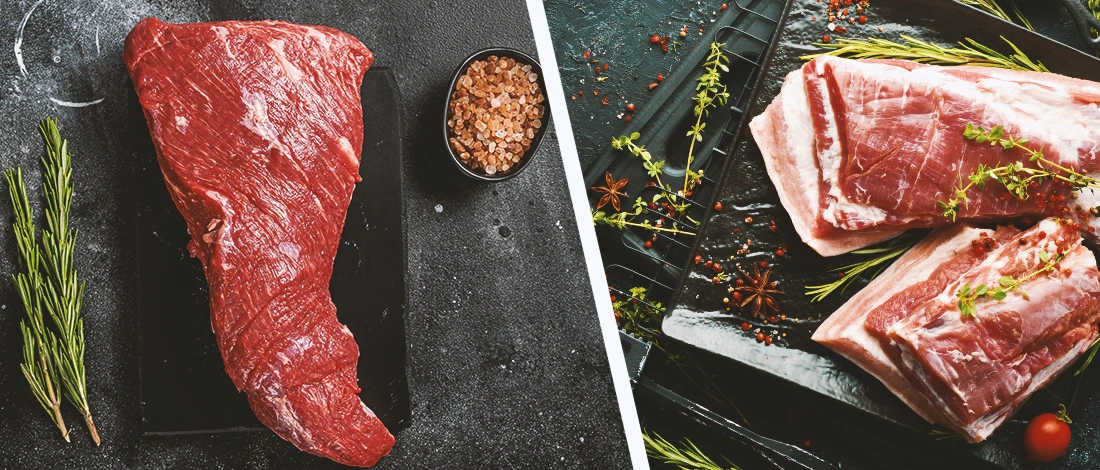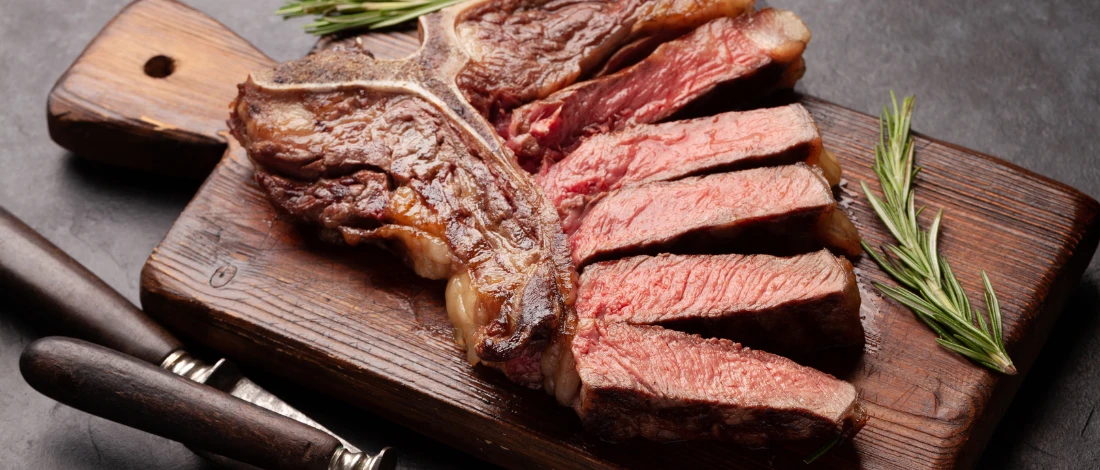In my carnivore household, beef is always on the menu. I love chuck, rib, brisket, and any steak you can think of. Lately, one cut of meat that I am prone to cook is the tri-tip steak.
The flavor profile and juiciness have made this cut my favorite, so I talked to my local butcher and did some online research to see where this cut comes from and what its nutritional profile is.
Here’s what I discovered.
Quick Summary
- Tri-tip comes from the bottom sirloin primal, located in the cow's lower back.
- The tri-tip contains good marbling within the meat, making it tender and flavorful when cooked properly.
- You can cook tri-tip steak in various ways, including grilling, roasting, and slow cooking.
What is Tri-Tip?
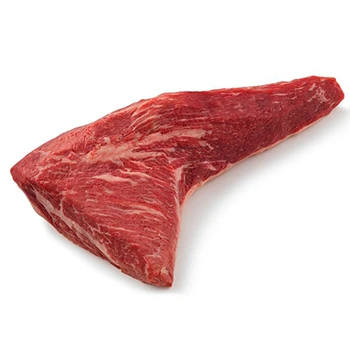
Tri-tip is a triangular slab of meat that comes from the bottom sirloin subprimal cut. This location is on the back hip or lower rump of the cow.
Tri-tip is comprised of the tensor fascia lata muscle, which is a lower-fat cut of meat than many other parts.
Lean and boneless, the tri-tip cut typically weighs about five pounds before being trimmed of fat and silver skin.
It has a triangular cut shape that tapers down to a point at one end and is flat on the other side. It may be sliced into steaks or sold as an entire roast.
Tri-tip steak has two grains that run through it. About halfway through the meat, in the thickest part, the grain will flip.
The triangle shape of the tri-tip lends itself to being cut into Santa Maria steaks with even thicknesses, making them ideal for grilling the tri-tip directly over the flame.
Also Read: What Is Ball Tip Steak?
Origins of Tri-Tip
Tri-tip steak is known by many names: California cut, triangle tip, bottom sirloin butt, Santa Maria steak, triangle steak, Newport steaks, culotte steaks, or poor man's brisket.
Perhaps its earliest entry into the United States was as the "triangle part" of the loin butt, fed to U.S. service members in World War I. Originally just used for ground beef, this cut wasted less of the cow than others.
After the war, this cut of meat was first called "tri-tip" by an Oakland butcher [1].
"The Bottom Sirloin provides cuts like Tri-Tip and Sirloin Bavette, which are good for roasting or grilling."
- National Cattlemen's Beef Association
It gained in popularity, particularly in California. However, as far away as New York (where it was known as Newport steak), the tri-tip steak was being sold.
Nowhere, however, did these steaks become as ingrained in the local culture as in Santa Maria, California.
Originally cooked rotisserie style with a simple rub of salt, pepper, and garlic, California cut quickly caught on and became a staple of restaurants throughout California's central coast [2].
Is Tri-Tip a Tough Cut?
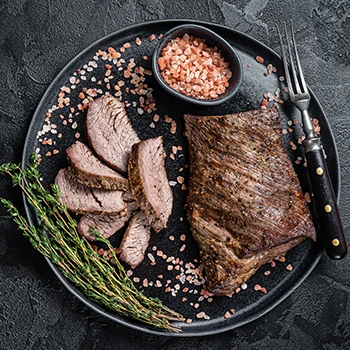
Tri-tip isn’t a tough cut. It is tender and full of beefy flavor. It is a lean cut, but it contains enough fat to keep the steak juicy.
The texture is tender if cooked from rare to medium well. However, past that, tri-tip steak has the risk of becoming tough.
That said, this steak takes a spice rub or marinade well, and this can prevent it from drying out when grilling for a long time.
You can ensure your tri-tip steak is tender and moist by cooking it to an internal temperature of 135°F by digital thermometer for medium-rare doneness.
Preparation Tips

Tri-tip is highly versatile when it comes to cooking methods – you can grill it over direct or indirect heat, bake or roast it in the oven, slow cook it in liquid (like a stew), or even smoke it over charcoal or wood chips.
- If you're looking for a roast that you can cook quickly on the grill, tri-tip steak is perfect since it only needs about 15 minutes per side.
- If you'd prefer to take your time with it, then you can also slow-cook a tri-tip roast in a Dutch oven or braise it in red wine to make a delicious stew.
- Whatever method you choose, ensure not to overcook your steak – aim for an internal temperature with a meat thermometer of 135°F if you prefer medium rare or 145°F if medium well is your desired doneness.
- Let your steaks rest after cooking before serving – this allows all those delicious juices to reabsorb into the meat. Then slice the steaks against the grain for maximum tenderness and flavor.
Nutritional Information
Tri-tip steak is lean, making it a healthy and nutritious choice. A 100-gram serving of steak contains about 165 calories and 8.6 grams of fat [3].
It's also an excellent source of protein (20.6 grams per serving), iron, zinc, and B vitamins.
Cooking Tri-Tip

One of the great things about tri-tip steaks is that they are versatile enough to be used in many a recipe.
I have cooked tri-tip over high heat on the grill for years, but here are a couple of my other favorite options:
1. Roasted Tri-Tip with Vegetables
Cook a tri-tip roast in an ovenproof dish along with vegetables such as onions, carrots, potatoes, and whatever else you fancy.
Drizzle everything in olive oil and season generously with salt and pepper before baking at 350°F for about 30 minutes or until the vegetables are soft.
2. Pan-fried Tri-Tip Steak Fajitas
Start by slicing the steak into thin strips, then heat some oil in a cast-iron, heavy skillet over medium to high heat.
Add the steak strips along with sliced bell peppers and red onions and cook until everything is lightly browned—about 8 minutes should do it. Serve your fajita mix on warm tortillas or over rice, along with fresh lime juice and cilantro sprigs.
Related Articles:
FAQs
Is Tri-Tip a Good Cut of Steak?
Tri-tip is a good cut of steak that is flavorful, tender, and juicy if cooked correctly. It is also a lean cut that can provide plenty of protein and other essential vitamins and minerals.
Is Tri-Tip Better Than Top Sirloin?
Many people consider tri-tip steak better than top sirloin, though it is a matter of personal taste. Tri-tip steaks tend to be more tender and flavorful, while top sirloin is more widely available and often is less expensive.
Is Tri-Tip a Cheap Cut of Beef?
Yes, tri-tip is a cheap cut of beef. It is cheaper than strip and ribeye steak but still delivers tenderness and juiciness.
References:
- https://www.slapyodaddybbq.com/2014/09/my-father-a-butcher-in-oakland-part-4-by-donna-fong-butchers-daughter-bbq-team/
- https://web.archive.org/web/20140523225646/http://www.santamariaelks.com/history/tritip.html
- https://fdc.nal.usda.gov/fdc-app.html#/food-details/168734/nutrients


